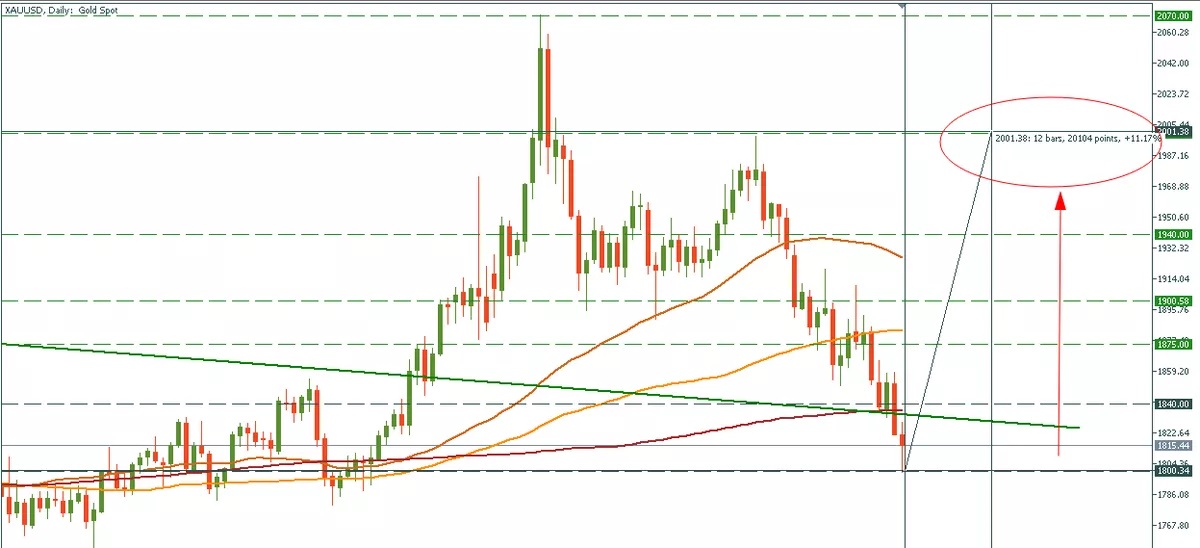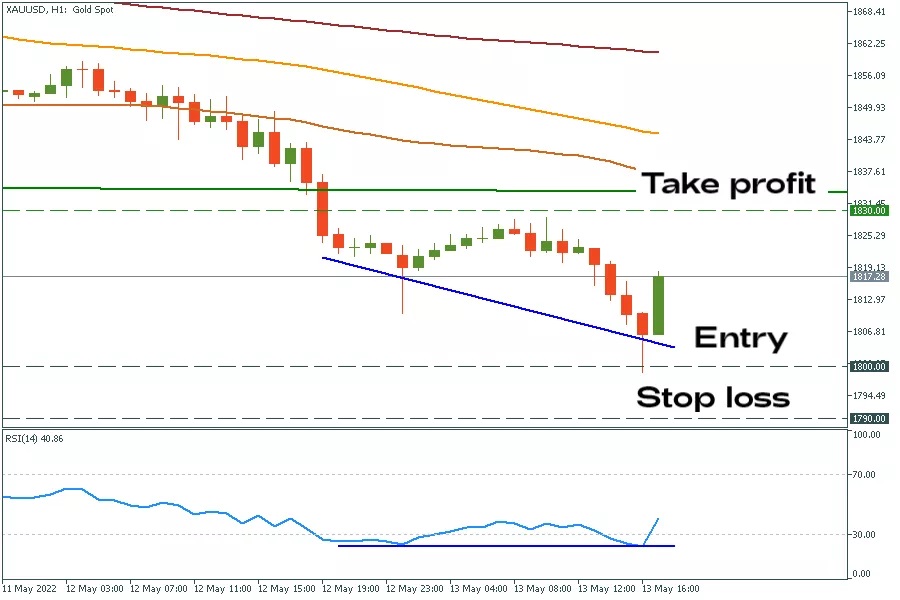What defines a good, profitable, and wealthy trader from the bad one? Some say it’s all about a trading strategy; others point to a mindset and trading psychology. Generally, they are right. But that’s not all. There’s a crucial aspect of the trading routine, and probably, the most important one, called a risk/reward ratio. From this article, you’ll know everything about it.
What Is the Risk/Reward Ratio (R/R Ratio)?
The risk to reward ratio (R/R ratio) measures expected income and losses in investments and trades. Traders use the R/R ratio to precisely define the amount of money they are willing to risk and wish to get in each trade. The risk/reward ratio is measured by dividing the distance from your entry point to Stop Loss and the distance from your entry point to Take Profit levels.
The relationship between these two numbers helps traders define whether the trade is worth it or now. The bigger the possible loss, the worse it’s for a trader because sometimes any person can have a series of bad trades. Thus, a big R/R ratio will lead to irreversible losses. Also, the R/R ratio is a vital aspect of every successful trading strategy, and there’s no profitable trader without R/R knowledge.
How does Risk/Reward Work?
Risk to reward ratio measures how many dollars you would get for each dollar you risk. Most analysts, traders, and investors say that the 1:3 R/R ratio is the best for most cases. We disagree with that, and we will explain why later. For now, let’s stick to the 1:3 ratio as the most popular one.
For every dollar you risk, you have the opportunity to earn three dollars. If you have an R/R ratio less than 1.0 (the 1:3 R/R ratio is 0.33, so it’s less than 1.0), you’ll get more than a dollar for each buck in the trade. To handle the risk/reward ratio better, you should use Stop Losses and Take Profits. This way, you’ll know for sure that you won’t risk more than you are ready to lose.
Importance of Risk to Reward Ratio
It’s fair to say the risk/reward ratio is one of the most important things you should use if you want to become a successful trader. It helps you calculate your losses and profits and gives you another reason to think twice before opening a trade. It would be best if you didn’t rely on the universal R/R ratio in your trading decisions. For every trade, you should determine how many you can afford to lose in a particular trade and how many you can lose today before you finish your trading.
If you see a trade that’s looking sweet because of price formations, economic background, or your inner sense, you can afford to take more risks and have a risk/reward ratio of 1:2, 1:1, or even 1:0.5. It’s OK as long as you understand why you enter the trade and control your emotions. Also, the smaller the R/R ratio you have (1:3 is not too small, but 1:5 is a small R/R ratio), the smaller your chances of earning in the trade. It happens because of market volatility that can move the chart to your Stop Loss and then reverse to your targets. It would help if you found a balance between the R/R ratio and the win rate of the trade to succeed.
Every undertaking in the market that involves any return demands a certain amount of risk. Avoid emotional decisions because they can change your preset financial goal and lure you into making inconsistent bets. It’s always necessary to have a risk-to-reward ratio to take calculative risk.
Risk/Reward Ratio Calculation
To calculate the risk/reward ratio, start by figuring out both the risk and the reward. Both of these levels are set by the trader.
Risk is the amount of money you can afford to lose in the trade. Don’t act blindly by putting the Stop Loss order at a random point on the chart just to maintain the R/R ratio. Stop Loss and Take Profit levels are way more critical than the risk/reward ratio as they define whether the trade has a chance to succeed or not.
The reward is the money you get when the trade reaches the Take Profit level. Just like with the risk, don’t put your Take Profit levels at any point of the chart to have a preferred R/R ratio. Sometimes it’s better to have a smaller R/R ratio but a higher win rate.
There is a simple risk-to-reward ratio formula that you can use to calculate the ratio.
Risk/reward ratio (R/R ratio) = (Entry point – stop-loss point) / (take profit point – entry point)
For example, if you buy XAUUSD at an entry point of $1800 and then place a Stop Loss at $1750 and a profit target at $2000, the risk/reward ratio is:
(1800 – 1750) / (2000 – 1800) = 50 / 200 = 1:4 (0.25)
Also, you can calculate the R/R ratio with points of price. Open a chart on Meta Trader 4/5 and click on the mouse wheel. The crosshair will emerge, and now you can click and drag the cursor to look for points of profit or loss.

Then, move the cursor down, and you will get the possible loss.
 We have a 5000 points of possible loss and 20 000 point reward. Thus, the risk/reward ratio is 4000 / 20 000 = 1:4 (0.25).
We have a 5000 points of possible loss and 20 000 point reward. Thus, the risk/reward ratio is 4000 / 20 000 = 1:4 (0.25).
Risk to Reward Ratio Example
First, you need to look for a trade that catches your attention. We’ll use XAUUSD (Gold) chart to simplify the explanations. We spotted a divergence on the RSI and assumed gold should rise. So before entering the trade, we define our Stop Loss. Where should we place our it? Usually, it should be placed below the support line. But we’ll move it even further to be safer. A decent support line lies at the $1800, so our Stop Loss will be at the $1790 level.
In the case of trading with RSI, our Take Profit should be near the closest resistance line, which is $1833. We will put our Take Profit a little closer just to be sure. The result is on your screens.

Then, we need to calculate the R/R ratio. In this trade, the risk/reward ratio is:(1800 – 1790) / (1830 – 1800) = 10 / 30 = 1:3 (0.33)
A decent and well-organized trade. Now we can open our position and wait for the target to get hit.
What is a Good Risk/Reward Ratio?
Most traders consider the 1:3 R/R ratio as the best for every trader. We disagree because sometimes a tiny R/R ratio means a lower winning rate. So if you are using a 1:1 risk/reward ratio, you have higher chances of making a profit than using a 1:4 risk/reward ratio. This happens because of market volatility and random fluctuations that can cause the price to swing towards your Stop Loss before hitting the Take Profit level.
In most cases, try to maintain the R/R ratio between a 1:1.5 and 1:3. This way, you will get the best from two worlds: the decent ratio to help you in trading and no inadequate risk that may cause a series of bad trades and account-blowing consequences.
Conclusion
The risk to reward ratio (R/R ratio) measures expected income and losses in investments and trades. If the ratio is bigger than 1.0, the risk is greater than the trade reward. If the ratio is less than 1.0, the reward is greater than the risk. Use it cleverly, and you will enhance your trading results in no time. Happy trading with Wealth World Markets
